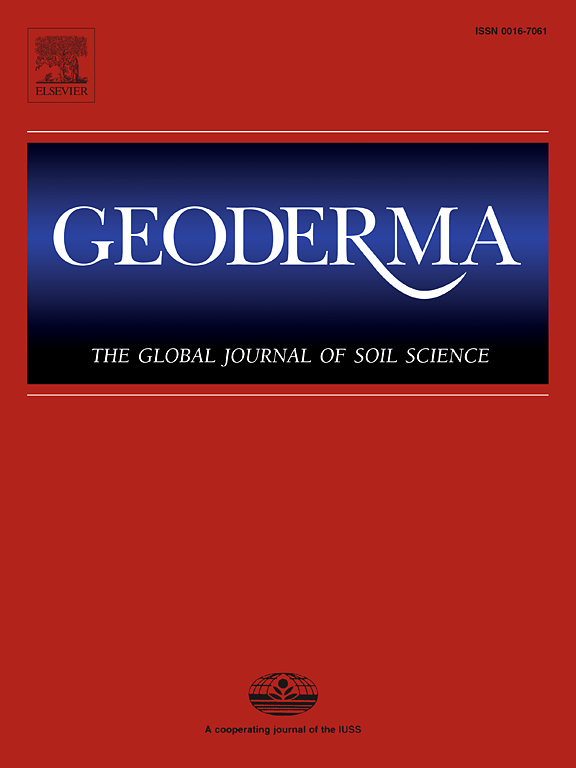Soil-smart cropping for climate-smart production
IF 5.6
1区 农林科学
Q1 SOIL SCIENCE
引用次数: 0
Abstract
Agriculture faces the dual challenge of sustainably increasing productivity to meet the food demand of a rapidly growing population and adapting to climate change. Despite significant efforts to develop more adaptive and productive crop cultivars and to improve water and nutrient management practices, the potential of crops to tackle this challenge by optimizing soil resource utilization remains underexplored. Here, we propose that optimizing root systems to promote the efficient acquisition of soil resources can increase yield, improve resilience to climate variability, and reduce environmental impacts. This optimization can be achieved through genetic manipulation at the crop species level and effective management of cropping systems at the field level (e.g., intercropping, rotation, and agroforestry). Advances in three-dimensional soil data collection, linking root traits to plant performance, and modelling of climate-soil–plant-management interactions are paving the way for soil-smart cropping. Effective communication and knowledge exchange with stakeholders beyond the scientific community are vital for accelerating the development and adoption of soil-smart practices for climate-smart and sustainable agricultural production.
以土壤智能型耕作促进气候智能型生产
农业面临着双重挑战:既要可持续地提高生产力以满足快速增长的人口对粮食的需求,又要适应气候变化。尽管人们在开发适应性更强、产量更高的作物栽培品种以及改进水分和养分管理方法方面付出了巨大努力,但作物通过优化土壤资源利用来应对这一挑战的潜力仍未得到充分发掘。在此,我们提出,优化根系以促进土壤资源的有效获取,可以增加产量、提高对气候变异的适应能力并减少对环境的影响。这种优化可以通过作物物种层面的遗传操作和田间层面作物种植系统的有效管理(如间作、轮作和农林业)来实现。在三维土壤数据收集、将根系特征与植物表现联系起来以及气候-土壤-植物-管理相互作用建模方面取得的进展,正在为土壤智能型种植铺平道路。与科学界以外的利益相关者进行有效沟通和知识交流,对于加快开发和采用土壤智能耕作方法,促进气候智能型可持续农业生产至关重要。
本文章由计算机程序翻译,如有差异,请以英文原文为准。
求助全文
约1分钟内获得全文
求助全文
来源期刊

Geoderma
农林科学-土壤科学
CiteScore
11.80
自引率
6.60%
发文量
597
审稿时长
58 days
期刊介绍:
Geoderma - the global journal of soil science - welcomes authors, readers and soil research from all parts of the world, encourages worldwide soil studies, and embraces all aspects of soil science and its associated pedagogy. The journal particularly welcomes interdisciplinary work focusing on dynamic soil processes and functions across space and time.
 求助内容:
求助内容: 应助结果提醒方式:
应助结果提醒方式:


